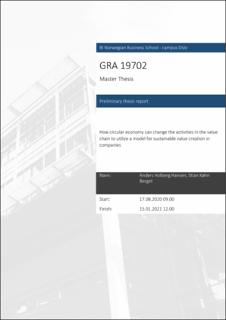| dc.description.abstract | The construction industry is among the largest industries in Norway, and it accounts
for a significant portion of the country's emissions. Over the last decades, global
material consumption has rapidly increased, as a consequence of materials and
resources not being fully utilized. This has had several environmental implications,
and the construction industry is one of the largest contributors to this.
There is great potential for improvement, and there is a need for adequate material
efficiency strategies to be implemented. Circular economy is a strategy that seeks
to utilize resource efficiency, thus minimizing resource input by changing the
activities in the value chain. Consequently, it aims to change a traditional linear
economy to a more circular one, entailing reuse, recycling and reduction of
materials and resources.
Based on this we decided to do a qualitative case study and look into a large and
well-known Norwegian construction firm to see how the circular economy and
sustainability are affecting the company. As a result, we formed the following
research question:
How have the focal firm’s activities and value chain(s) developed and changed in
the last years, towards a different business model and value creation, given the
circular economy and sustainable approach it has been pursuing?
To answer our research question, we further divided our study into four different
research sub-questions, each examining a core topic of our research question. Our
findings showed that there is a considerable change happening in the activities,
throughout the entire value chain. This is exemplified by the focal firm’s
Environmental Parks which have turned two previously separated markets into one
single new market. The traditional value chain framework, proposed by Porter
(1985), does not necessarily fit in the construction industry moving forward.
Furthermore, we have recognized several barriers to this implementation—most
notably cultural barriers, rigid regulatory systems, and cooperation among actors. | en_US |

